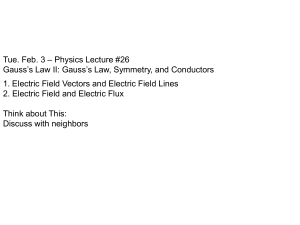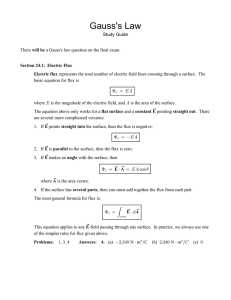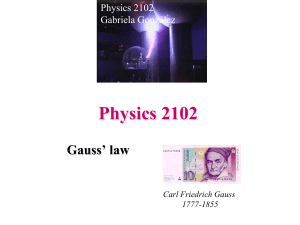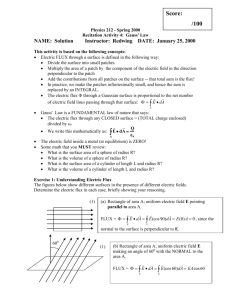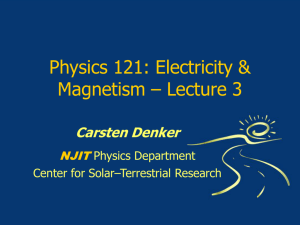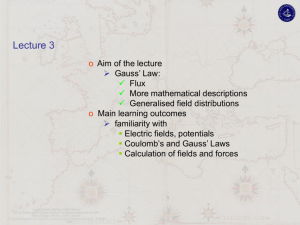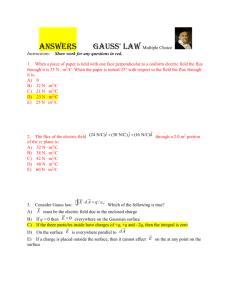Flux of Vector Field
advertisement
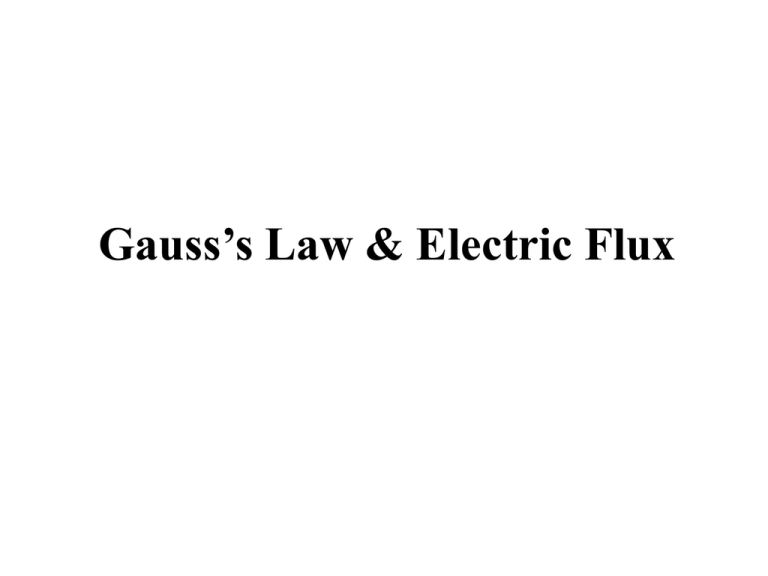
Gauss’s Law & Electric Flux Flux of a Vector Field • Introduction – Electric field can be determined by Coulomb’s law as well as by Gauss’s Law – What is the requirement of Gauss’s Law? • It gives simpler way of Calculating field • Gauss’s Law is more General and fundamental • Coulomb’s Law is valid for static point charges but Gauss’s law is also valid for rapidly moving charges – We need to introduce the concept of FLUX (a latin word) • Flux of Vector Field – Consider a velocity field of flowing fluid passing through a closed loop. The flux vA v A A v A v v( A cos ) • Definition (Number of field lines passing through an area placed perpendicular to field lines) • Positive, Negative and zero Flux • Concept of Source and sink • Calculation of the flux through the surface • Generalization of Flux A5 A2 v A1 A4 A3 Flux of an Electric Field • Definition of electric flux: = E.A • Flux through an arbitrary surface due to a non uniform field • Consider arbitrary closed surface – Divide the surface in small squares of area ‘dA’ – ‘E’ is then constant on each area – Consider three different elements – Negative, positive and zero flux – Adding up ‘E. dA’ for each element E E.dA • Electric flux through cylinder Gauss’s Law • Gauss’s law relates the total flux through a closed surface to the net charge ‘q’ enclosed by the surface • Step-1: Analyse the collection of positive and negative charges • Step-2: Draw an imaginary closed surface around the collection of charges called Gaussian surface (Important note) 0 E q 0 E.dA q The circle on the integral sign indicates the closed surface Example Electric field of a dipole S4 + S1 S3 - S2 Applications of Gauss’s Law • Infinite line of Charge – Step-1: Choose a Gaussian surface (Here cylindrical) – Step-2: Calculate total charge enclosed – Step-3: Calculate flux (through cylindrical surface, upper and lower faces) – Step-4: Apply Gauss’s law + + + + + + + + + h + + + + + + + + + Applications of Gauss’s Law • Infinite sheet of Charge • Spherical shell of charge • Shell Theorems – A uniform spherical shell of charge behaves, for external points, as if all the charge was concentrated at its center – A uniform spherical shell of charge exerts no electrical force on a charged particle placed inside the shell

